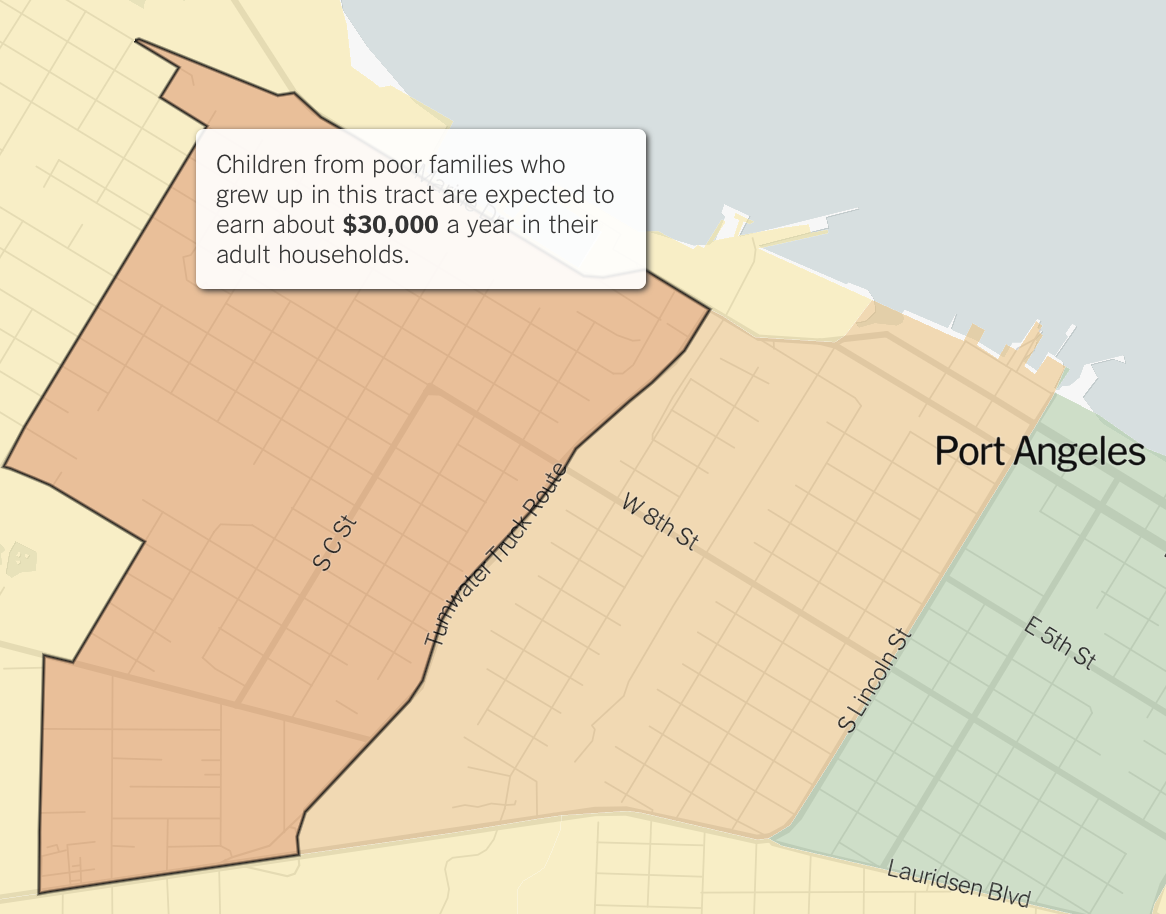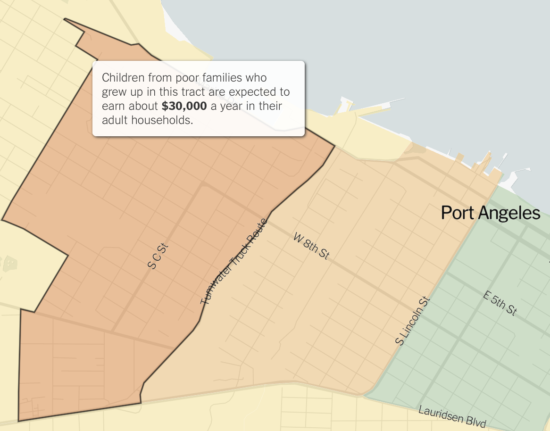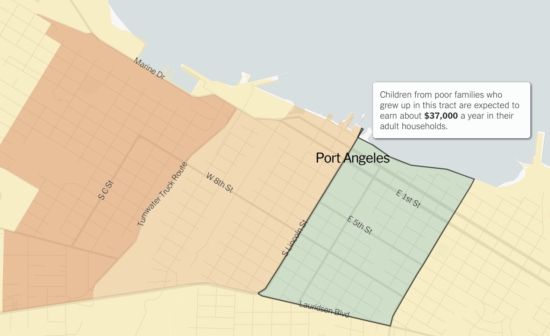
By Zach Wakefield


Where you live now could affect everything, from your likely future income to your chance of being incarcerated. On October 1, in a new study published by The New York Times, with research ran by decades of housing, city officials, and various sociologists gave an detailed look into the neighborhoods of the United States and the affect of those neighborhoods on future generations income.
The map was particularly interesting in its amount of census level detail, with multiple neighborhood data even in extremely rural areas. Just in Port Angeles alone on the map were striking differences in the amount of incomes for families, with children living in poor families from east Port Angeles more likely to earn around $7,000 more per year than children from poor families just a mile away in the west part of town.
These numbers come from years of studies and professionals are hoping to use these maps and information to finally crackdown and help these neighborhoods, whether these inequalities in income come from race, class, or overall support to the youth in the area. Researchers believe that much of the diversity in income within these neighborhoods come down to the opportunities in the neighborhoods themselves, not what bring people to live in them, which is why in most US cities it is possible to drive through a rich neighborhood and out of town without ever having to view poverty in the same town. Some of the reasons behind the differences between neighborhoods is more mysterious, as researchers don’t know why some neighborhoods are more helpful to the youth than others.
